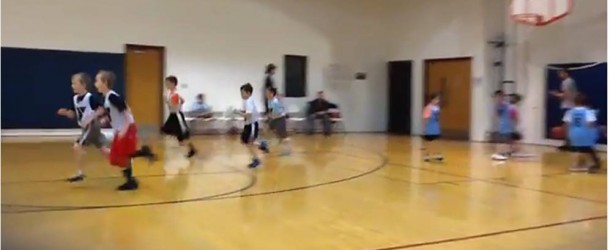I’ve been thinking about a conversation I had earlier this week while playing cards with some friends. My friend had seen a post on Facebook about this new youth sports organization I was part of and he was curious what exactly we were doing.
After giving him the 10,000 foot view of what the Bombers Youth Teams are all about, he interrupted with this question – You haven’t turned into one of those people that thinks winning doesn’t matter have you?
Now anyone who knows me well is likely to laugh at the inference that I don’t care about winning. I’m the guy who turns a game of Spades with relatives over the holidays into a full blown Spades Tournament. Fortunately I’ve grown up in an environment that embraced competition so my approach isn’t “over the top” with close family and friends, or at least they’ve tolerated me over the years.
But his question was a fair one given the context of our conversation. It just so happened my friend and I were placed at the same table when the card playing began so we had ample time to deliberate the topic.
I explained to my friend that I’m working with kids ranging from 5 to 13 years old so the approach varies depending on the audience. That being said, at all levels there are games being played and at the end of each contest there is a winner and a loser.
But the level of importance placed on winning from game to game differs. And even then, how we define winning is a conversation worth having.
Sure, it’s natural to look at the score at the end of a basketball game and if your team scored less points than your opponent, you lost the game. But especially with the younger kids, merely winning a game doesn’t mean you were successful in accomplishing your objective of helping the kids realize their personal and team potential.
Part of teaching and nurturing these young athletes is not only introducing them to the skills and techniques necessary to have success in the respective sport, but also to teach them what winning and losing is about. In all seriousness, the feedback we gain from the final score of a 2nd grade basketball game doesn’t provide us a good barometer on our progress. There are just too many variables that are out of our team’s control at this level. This is where a good coach is able to help his team (kids and parents) understand what should be measured from game to game and practice to practice.
Games at the youth level should be treated as an extension of practice. What I mean by this is coaches need to incorporate all players into game situations, even when they know a particular player may not have as much success as one of his teammates. It’s impossible to replicate game like speed and conditions and if you shelter youth athletes from experiencing a game like situation you are slowing down the skill development progression.
More importantly, kids just want to play. At the end of the day, a kid will enjoy playing and losing more than never being included in the action. Important to understand, just having a kid on the court or camped out in right field isn’t allowing the kid to truly play. Youth coaches have to create a system whereas all players can experience all positions on the court or field. Ensuring a kids safety is the only reason a coach should exclude a youth athlete from playing a position. (If the kid can’t catch the ball, placing him at first base is clearly putting his safety at risk).
Just because we’re not always playing our best players in the most opportunistic positions doesn’t mean we aren’t playing the game to win. Each game is treated as another test of how well the kids are learning the skills and techniques being taught. Our objective on game day is to execute the skills and techniques while supporting our teammates in their attempt at the same. It’s not really all that surprising, but using this philosophy leads to far more wins on game day than losses.





